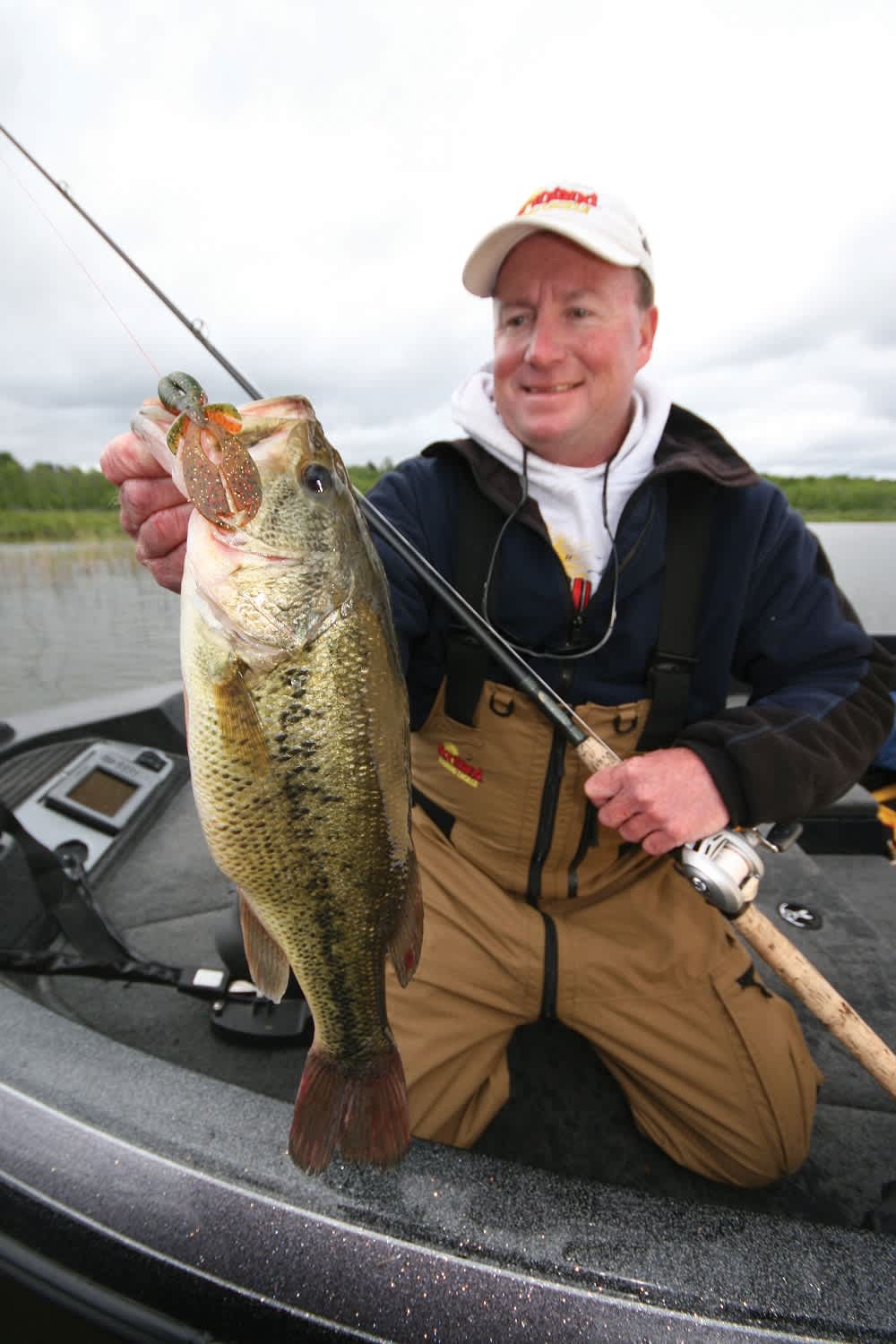Ways to Rig Your Soft Plastics
Dan Armitage 04.29.14

Flip through any of the spring fishing tackle catalogs or stroll through the lure department of your local tackle shop or department store and you’ll see the fake bait selection dominated by what are known today as “soft plastics.”
This category got its start in a basement in Akron, Ohio, in 1949 when Nick and Cosma Crème cooked up a combination of vinyl, oils, and pigments that allowed them to produce a molded worm that not only looked and felt soft and alive, but remained that way when exposed to air over time, and the original “rubber worms” were born. Bass anglers soon started netting big catches on the Crème Wiggle Worm that in 1951 sold through the mail at a price of five for $1.
I remember buying my first rubber worm a decade later, probably a Crème creation, when the soft plastic fakes were really gaining ground among anglers. The nine-inch-long purple monstrosity was molded around a bead chain that connected a gang of hooks and sported a chrome propeller on its nose. It must have weighed at least an ounce, and I could fling that lure half way across the lake with my Zebco 33. I never caught a fish with it, but it sure was fun to toss when I wanted to impress fellow fishermen with my casting skills.
Since then, rubber worms have morphed into a broad category of fresh and saltwater lures referred to as “soft plastics” and become one of the most popular styles of artificial baits ever offered. That said, the basic “rubber worm” remains one of the most reliable soft plastic baits on the market, even as grubs, lizards, and other new shapes and styles appear each season.
Early on, anglers learned that plastic nightcrawlers and their kin could be rigged several ways to draw strikes from bass and other gamefish, and didn’t necessarily have to imitate the real thing in shape, size, color, or action to be effective.
The two traditional rigging methods for the original plastic worms remain popular and are named after the states in which they were developed: the Texas rig and the Carolina rig. More largemouth bass have been caught on these two worm rigs than on all other lures combined, and knowing how to rig and use soft plastics with these methods will not only net you more bass, but will serve as a foundation for rigging other soft plastic baits for other gamefish species.
Texas rig
A Texas-rigged worm or grub will catch any fish that swims. You can fish them on the surface, shallow, or, by adding a sliding weight to the line ahead of the hook, you can get a Texas-rigged plastic down as deep as you need it. You can Texas-rig 10-inch worms for bass or two-inch grubs for walleye, trout, or panfish.
Texas-rigging a soft plastic to a bare hook and no weight, you can cast it out and bring it in with a steady retrieve, or use a pause-and-twitch retrieve, at any depth from the surface down. By threading a sliding sinker to the line above the hook, you have a weighted rig that can be hopped slow or fast (or reeled steadily at a snail’s pace) across the bottom to draw strikes.
Carolina rig
The other popular way to rig a rubber worm is called the Carolina rig, which is very similar to the Texas rig but with some significant differences. You always use a weight and fish a Carolina rig along the bottom, and there is a leader between the hook in the head of the worm and that weight. A glass bead is added between the barrel swivel and the weight to protect the knot and to create a “clicking” sound when the sinker and the bead tap against each other during the retrieve. You also usually fish a Carolina-rigged worm slowly across the bottom, using regular sweeps of the rod to make the worm dart up off the bottom and the settle seductively behind the free-sliding sinker.
Regardless of the rig you choose and any method you fish ‘em, “rubber worms” are deadly fakes for a variety of gamefish, in freshwater and salt.

